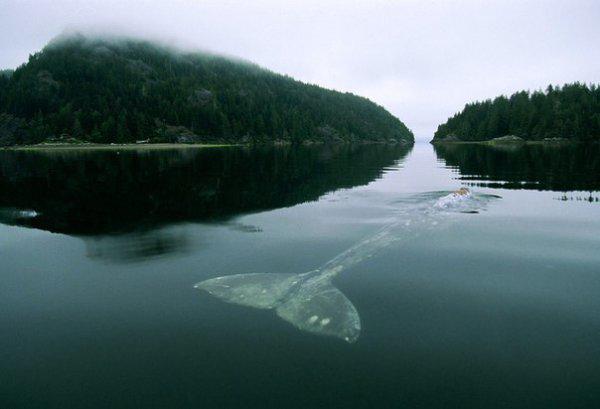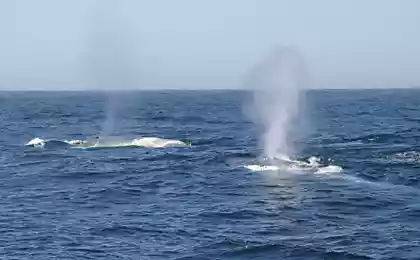1053
Loneliness at a frequency of 52 hertz
This 52-hertz whale. He got his name because of the frequency of 51, 75 Hertz on which it publishes its signals.
The problem is that the rest of the whales communicate at frequencies of 15-25 Hz, ie hear none of them it could never.
Keith was first notch locators in 1992, and since then scientists keep track of his sad journey.
They argue that the whale calls tirelessly in the void, hoping to find their own kind.
The hopelessness of his situation that he does not move on the migration routes of other whales, ie he does not even physically possible encounter with other whales.
Scientists do not know the cause of this defect.
Some argue that it is a mixture of any two species of whales, others that he was the last representative of the kind previously unknown to us.
Whatever it was, it probably is doomed to wander forever alone in the vast expanses of the ocean.

The problem is that the rest of the whales communicate at frequencies of 15-25 Hz, ie hear none of them it could never.
Keith was first notch locators in 1992, and since then scientists keep track of his sad journey.
They argue that the whale calls tirelessly in the void, hoping to find their own kind.
The hopelessness of his situation that he does not move on the migration routes of other whales, ie he does not even physically possible encounter with other whales.
Scientists do not know the cause of this defect.
Some argue that it is a mixture of any two species of whales, others that he was the last representative of the kind previously unknown to us.
Whatever it was, it probably is doomed to wander forever alone in the vast expanses of the ocean.
























